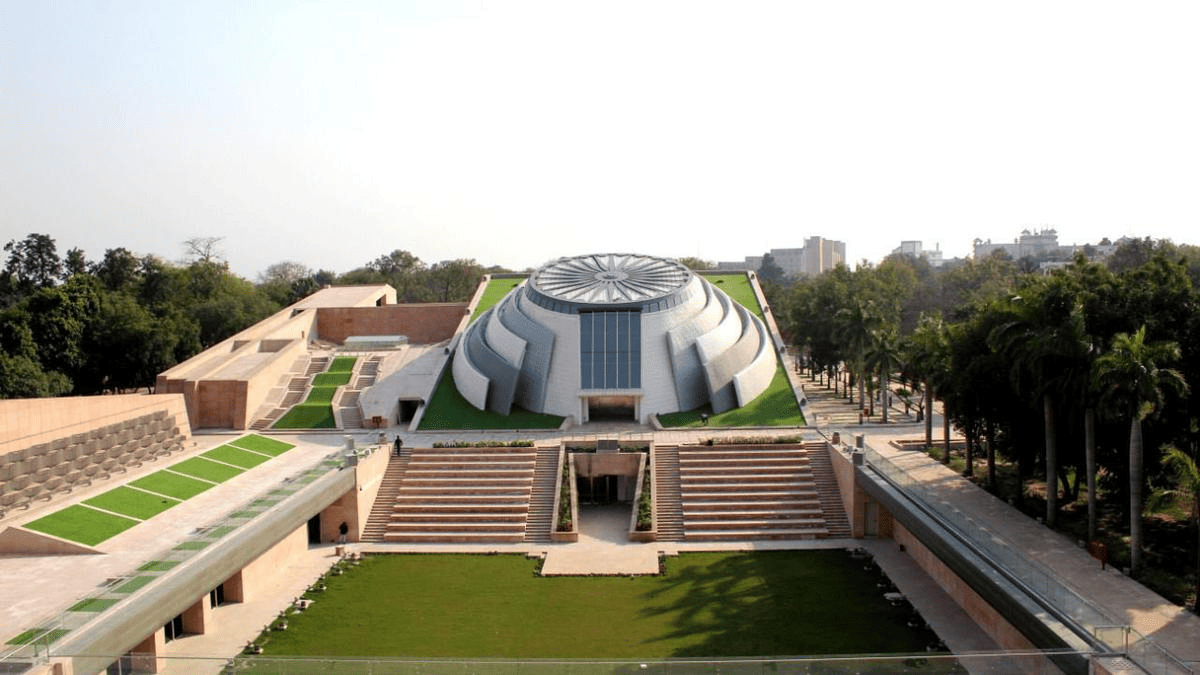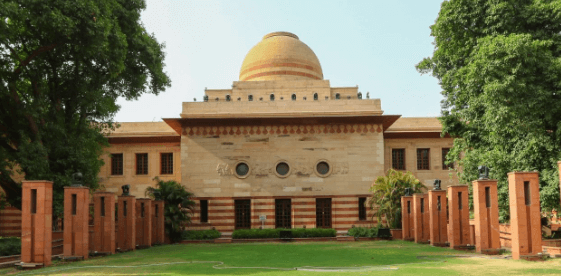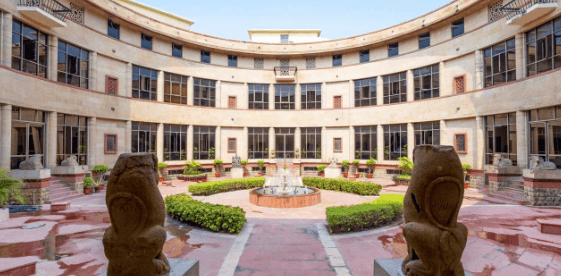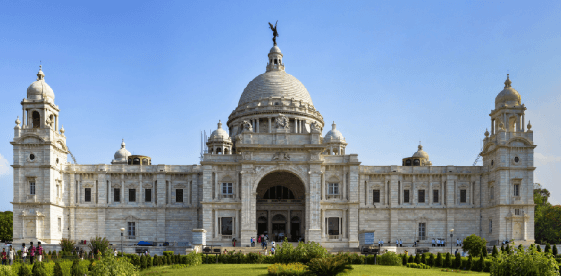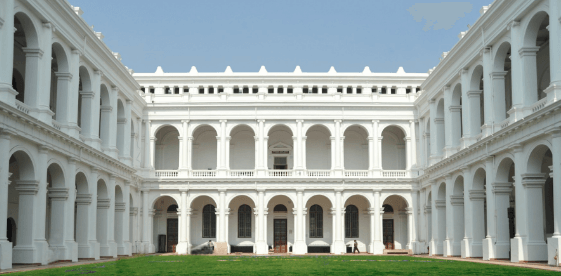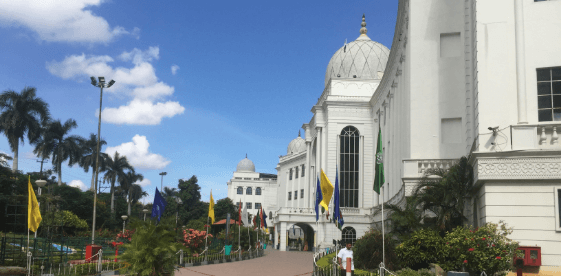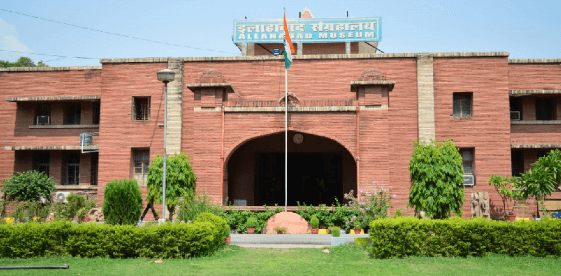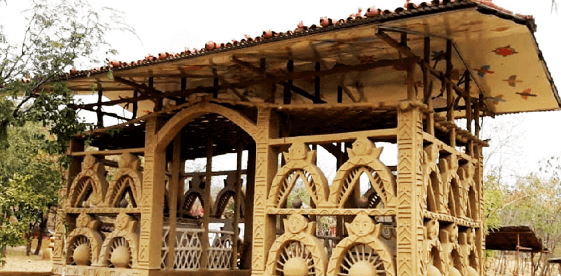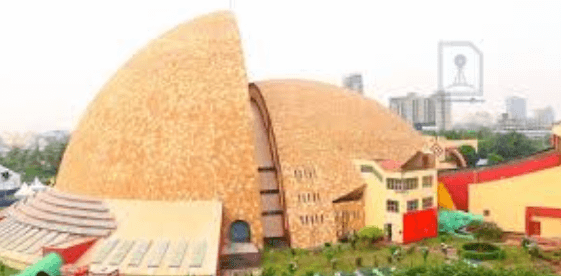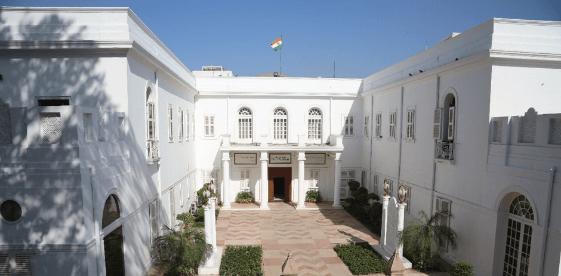Pradhanmantri Sangrahalaya
The Pradhanmantri Sangrahalaya at Teen Murti Estate honours the legacy of India’s Prime Ministers and their role in shaping the nation’s journey from Independence to modern progress. Showcasing 100+ global artefacts and memorabilia, it reflects the diversity and strength of Indian democracy. The museum seamlessly weaves Jawaharlal Nehru’s legacy with the broader narrative of national development, inspiring future generations in the vision of a "New India."
National Gallery of Modern Art
The National Gallery of Modern Art (NGMA), established in New Delhi in 1954, is India’s leading institution for modern and contemporary Indian art. Housed in the historic Jaipur House, its vast collection spans from the mid-18th century to the present. With regional centres in Mumbai and Bengaluru, NGMA promotes artistic innovation and curatorial excellence. Showcasing over 17,000 works by 2,000 artists, it plays a vital role in preserving and reshaping India's rich cultural legacy.
National Museum
Established in 1949, the National Museum in New Delhi originated from a landmark Indian art exhibition in London (1947–48), with its artefacts forming the museum's foundation. Initially inaugurated at Rashtrapati Bhawan, its current building opened in 1960. Now under the Ministry of Culture, it houses around 2 lakh objects across 22 galleries, showcasing India’s rich and diverse heritage through years of acquisitions and donations.
Victoria Memorial Hall
The Victoria Memorial Hall, established in Kolkata in 1921, is a grand architectural tribute to Queen Victoria, envisioned by Lord Curzon as both a monument and a museum. Blending British elegance with Indian heritage, it was built through the collective efforts of the people of India. With over 28,000 artefacts and 3,900 paintings across 8 galleries, it narrates the rich history of the Indian Empire and Queen Victoria’s legacy.
Indian Museum
Established in 1814 by the Asiatic Society of Bengal, the Indian Museum in Kolkata is the oldest and largest multipurpose museum in the Indian subcontinent. Founded through the efforts of Sir William Jones and fellow scholars, it preserves India's vast cultural and scientific heritage. Now governed by the Ministry of Culture, it houses over 100,000 objects, including sculptures, manuscripts, coins, fossils, and more—spanning art, archaeology, anthropology, and natural history.
Salar Jung Museum
Established in 1951 in Hyderabad, the Salar Jung Museum is a premier institution of art and culture, named after Salar Jung III, whose vast personal collection forms its core. Housed in the historic Dewan Devdi Palace, it features over 42,000 artefacts, 9,000 manuscripts, and 60,000 books across 39 galleries and libraries. Under the Ministry of Culture, it remains a beacon of heritage, showcasing the artistic legacy of India and the world.
Allahabad Museum
Established in 1931, the Allahabad Museum is a vibrant centre of art and history, showcasing around 72,000 artefacts across 16 galleries. Its diverse collection includes paintings, sculptures, coins, manuscripts, and personal items of national figures like Gandhi, Nehru, and renowned literary icons. With dynamic exhibitions and cultural displays, the museum—under the Ministry of Culture—offers a rich exploration of India’s heritage and artistic legacy.
Indira Gandhi Rashtriya Manav Sangrahalaya
The Indira Gandhi Rashtriya Manav Sangrahalaya (IGRMS), established in 1977 and renamed in 1993, is a unique national museum that began without a collection but with a powerful vision. Located in Bhopal and supported by the Ministry of Culture, it focuses on connecting communities with their heritage. With over 25,000 ethnographic objects, IGRMS showcases India’s rich tribal and folk traditions across 12 indoor galleries, promoting cultural understanding and diversity.
National Council of Science Museums
The National Council of Science Museums (NCSM), established in 1978, is the largest network of science centres and museums in the world under one umbrella. Originating with the Birla Industrial and Technological Museum in 1959, NCSM now oversees 6 National Centres and 20 Satellite Units across India. It plays a pivotal role in promoting scientific temper and innovation, making science accessible to all through interactive exhibits and educational initiatives.
Gandhi Smriti and Darshan Samiti (GSDS)
Gandhi Smriti and Darshan Samiti (GSDS), established in 1984, preserves and promotes the ideals of Mahatma Gandhi through two campuses in New Delhi. Gandhi Smriti, located at Birla House, marks the site where Gandhi spent his last days and was martyred. It houses one of the largest museums on Gandhi, with 60,000 books and 6,000 original photographs. The second campus at Rajghat, Darshan Samiti, serves as a centre for Gandhian learning and cultural activities. Together, they keep Gandhi’s legacy alive for future generations.



